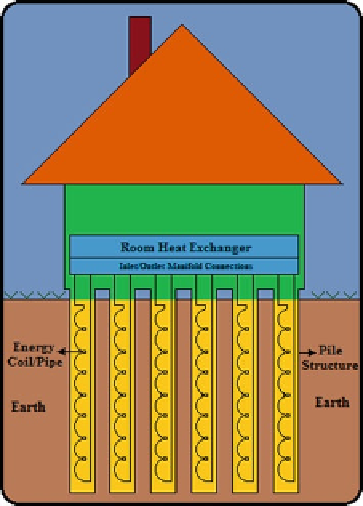Civil Engineering Reference
In-Depth Information
outdoor air temperature, if sensed to be greater than the room air temperature, the
indoor air is routed through the pipe structures embedded in the earth.
The cold energy contained by the earth is then trapped off by the air circulating
through the pipe, and the cooling load demand in building can be effectively
catered. The option of diverting the indoor air through the earth pipes depends on
the outdoor air temperature variations experienced during seasonal conditions.
4.4 Energy Piles Thermal Energy Storage
In recent years, the concept of introducing helical coil or spiral pipes into the
building concrete pile structures is gaining momentum, because of its energy
storage aspects related to the cooling and heating requirements in buildings. The
schematic diagram of the energy piles TES system is shown in Fig.
6
.
The coil elements are connected to the heat pump systems installed in the
building, which transfers the heat or cold energy to the pile structure (beneath the
ground surface). The design cooling or heating load demand in buildings is catered
at ease with this system on a year-round basis.
Fig. 6 Schematic
representation of the energy
piles TES system

